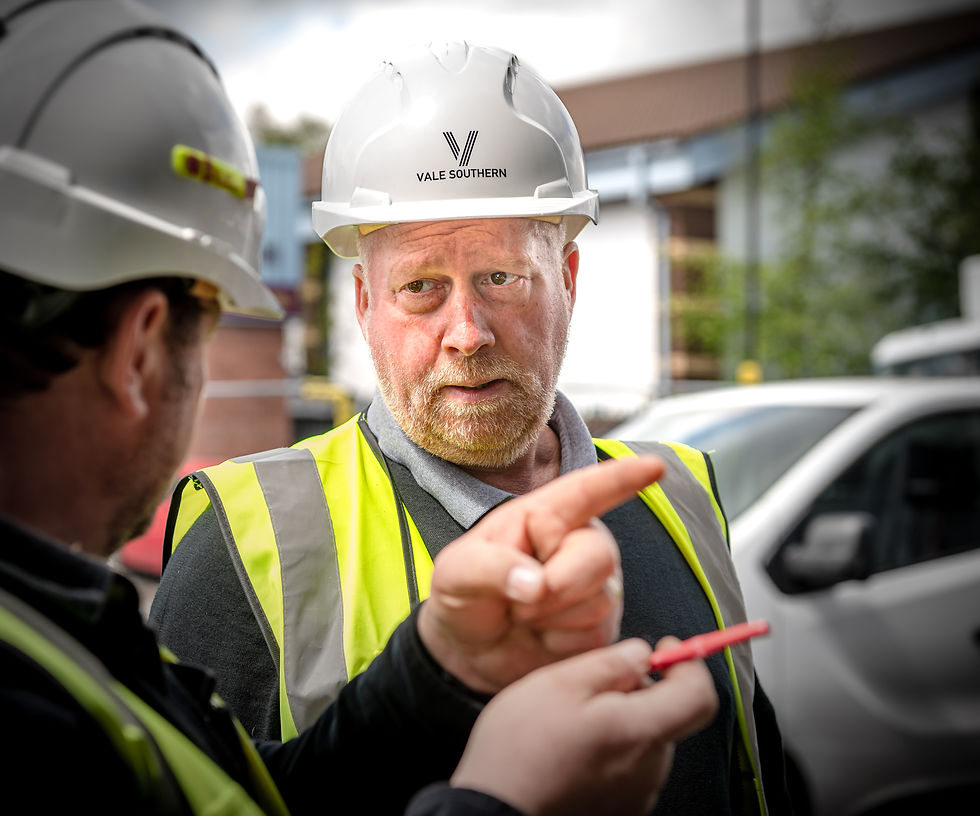Construction inflation: why collaboration holds the key to resilience
- Sian Siekierski
- May 9
- 2 min read
Updated: May 29
In the face of rising tender prices, Vale Southern MD Oliver West discusses why the construction industry must move towards a more collaborative approach.

With reports indicating that construction inflation is set to return, tender prices are expected to increase too. The latest BCIS construction industry forecast anticipates a 19 per cent increase in tender prices over the next five years. This stat follows Turner & Townsend’s market intelligence predicting a 3%-3.5% rise in tender prices for building work over the next two years.
In response, the cost consultant highlights a key message: act now and secure strong, collaborative supply chains. But will the construction industry take this advice seriously?
A call for true partnership
The need for greater collaboration is undeniable.
In the past year, shifting risk down the supply chain has sadly become the norm. The reason? Too often, contractors are just seen as suppliers rather than partners.
Changing this traditional client-contractor relationship would have a significant impact on our industry’s resilience. A true partnership model with shared risk and reward could ensure projects are delivered efficiently with financial stability across the entire supply chain. As highlighted by Turner & Townsend, this would mitigate insolvencies, encourage investment in training, and create a more stable operating environment.
The race to the bottom must end
The construction industry has long suffered from a ‘race to the bottom’ mentality where securing work is prioritised over fair pricing. This negative cycle puts pressure on the whole supply chain to cut costs to remain competitive. Contracts may be won in this way but come with a large helping of risk, including potential quality and sustainability issues.
A more collaborative approach would help to break this mould. Communication would improve, encouraging greater transparency regarding project expectations and costs. If these were discussed and agreed openly from the outset, all parties would be in stronger position to maintain sustainable margins.
At the end of the day, everyone in the industry from subcontractors to main contractors, needs to earn a fair living. Ensuring fair and realistic pricing from the start would not only improve financial stability but promote better working relationships and higher-quality outcomes.
The role of regulation and engagement
Such changes will require a significant cultural shift across our industry, so won’t happen overnight. But new regulations, including the Building Safety Act, may also help drive a more collaborative approach. Many Pre-Construction Services Agreements (PCSA) now require key consultants and subcontractors for higher risk buildings to be engaged earlier in the process.
This shift allows for the development of more realistic and robust cost plans, reducing risk by ensuring designs are sufficiently advanced before project costs are locked in. When contractors and suppliers are brought in at the right stage, productivity can increase too, reducing costs further down the line.
Time for change
Although achieving a truly collaborative construction industry will take time and effort, it’s never been more important. The current economic climate and rising tender prices mean more effective partnership working and communication are crucial.
So, will clients embrace this much-needed change? Or will the industry continue to be weighed down by outdated procurement models and unrealistic cost expectations? Only time will tell but one thing is clear: collaboration isn’t just a buzzword, it’s the key to the construction industry’s future.




Well-written and very informative! Renovations can completely transform a space when done right. I recommend checking out Vulcan Hats Constructions, who are highly experienced in Toronto home renovation projects with great attention to detail.